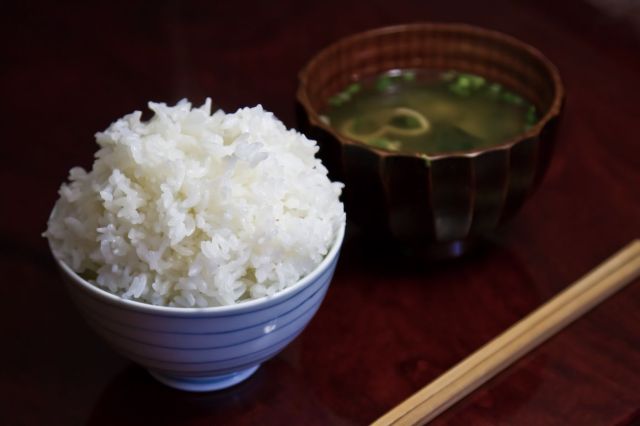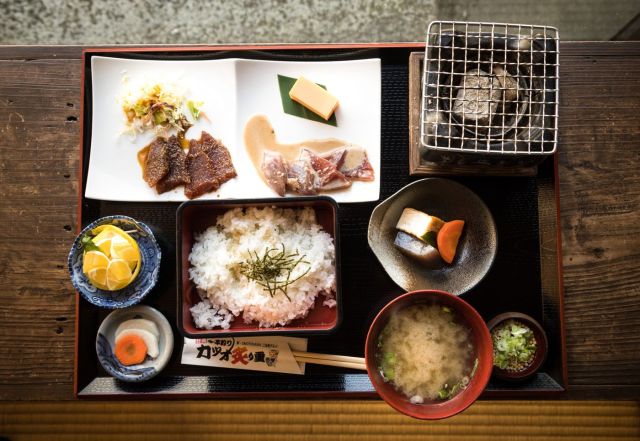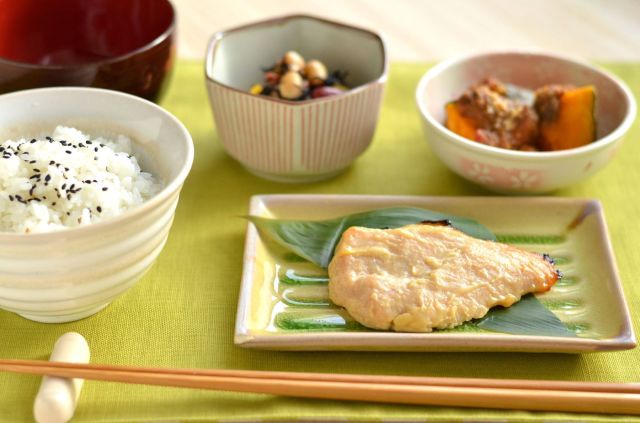
Difference between Tokyo and Osaka kicks off a nationwide debate on Japanese miso placement etiquette.
When you travel around Japan, you’ll find there isn’t always one correct way of doing things. The differences between etiquette varies from region to region, and nowhere is that difference quite as stark as it is between the western city of Osaka and the eastern city of Tokyo.
The contrast between east and west, or Kanto and Kansai as these regions are known in Japan, is evident in things like onigiri rice balls, sushi, and even fast food, but now people are reeling over the revelation that it affects where your miso soup is placed too.
▼ When you order a set meal in the Kanto region in and around Tokyo, the miso soup is generally placed in front, and at the right.

▼ A set meal in Osaka and its surrounding regions, however, will have the miso soup at the back, and to the left.

The differences in miso placement came to light during the T.V. programme Mizuno Maki no Mahou no Resutoran (“Maki Mizuno’s Magic Restaurant“), which aired on 2 March. According to the programme, a recent survey of people in downtown areas showed that over 90 percent of respondents in Osaka place their miso soup at the back left, while over half of the respondents in Tokyo place theirs at the front right.
▼ The different positions shown during the segment, with Osaka on the left and Tokyo on the right.
味噌汁置く位置、関東は手前って
— 蓮
はじめて知った!!!
まじでそーなの?!
うちは完全に左の写真だわ~~
他の地域はどう置くんだろ( ˙꒳˙ )??? pic.twitter.com/y23wjJOA8m(@BangerRen) March 2, 2022
During the show, Fukushima-born actor Tomio Umezawa, who was a proponent of the Kanto style of miso placement, said he’d never seen or heard of miso soup being positioned behind the rice, saying: “It has to be placed on the right. That’s the rule.”
Fuminori Ujihara, from Osaka-based comedy duo Rozan, was quick to defend the style of his region, challenging Umezawa’s point-of-view with: “When I eat the main dish, my right hand gets hot. What about the steam from the miso soup?”
▼ Ujihara makes his point about the right hand issue during the show.
まほレスのこれ。
— ひなぽよ (@hina130830) March 2, 2022
お店で定食を注文したらたまに右の東京並びで出てきて、不思議に思いつつ味噌汁と鮭の位置を入れ替えてから食べ始めてた。
東西の文化の違いだったなんて…
あらぶる宇治原さんかわいい… pic.twitter.com/RhEdAaGwCF
Ujihara went on to say, in his humorous comedy style, “Do people in Tokyo eat cold miso soup? People in Tokyo are definitely spilling their miso soup.”
This point about the constant movements of the hand over the soup causing it to become cold and possibly spill, certainly struck a chord with a lot of people as the debate regarding where the miso soup should be placed soon spilled over from the T.V. show and out to social media.
Surprisingly, a large number of people who’d lived all their lives in Japan and frequently travelled between Tokyo and Osaka had never noticed the difference until now.
“The placement of miso is at the front in Kanto? Why have I never known this!”
“We always place the miso at the front right — I never thought there was another place for it!”
“I never noticed there was miso soup placement etiquette!”
“Now that I think about it, it’s more efficient to reach for the bowl with your left hand, without using chopsticks.”
“When it’s in the front, it always gets in the way and I worry about knocking it over.”
“If you consider rice and miso as staple dishes, then they should be at the front as they’re eaten first. Do you eat the main dish first in Kansai then?”
While there’s no definite answer as to why miso is placed on the right or left, the theory that it could be connected to the order in which dishes should be consumed does appear to hold some weight, especially as the “sankaku tabe” eating order method is considered to be the conscientious, polite way of eating.
So next time you order a set meal in Japan, take a look at where the miso bowl is placed and see how it affects your eating style. If you want to stay in everyone’s good books, you’ll want to keep it in the spot where it was placed when presented to you, but after a while you’ll probably find a preference for one style over the other, just as the TV guests did.
Whatever you do, though, don’t turn your bowl over after eating. That niche practice is one most chefs won’t appreciate.
Source: Sponichi Annex via Yahoo! News via Jin
Featured image: Pakutaso
Insert images: Pakutaso (1, 2)
● Want to hear about SoraNews24’s latest articles as soon as they’re published? Follow us on Facebook and Twitter!


No hay comentarios:
Publicar un comentario